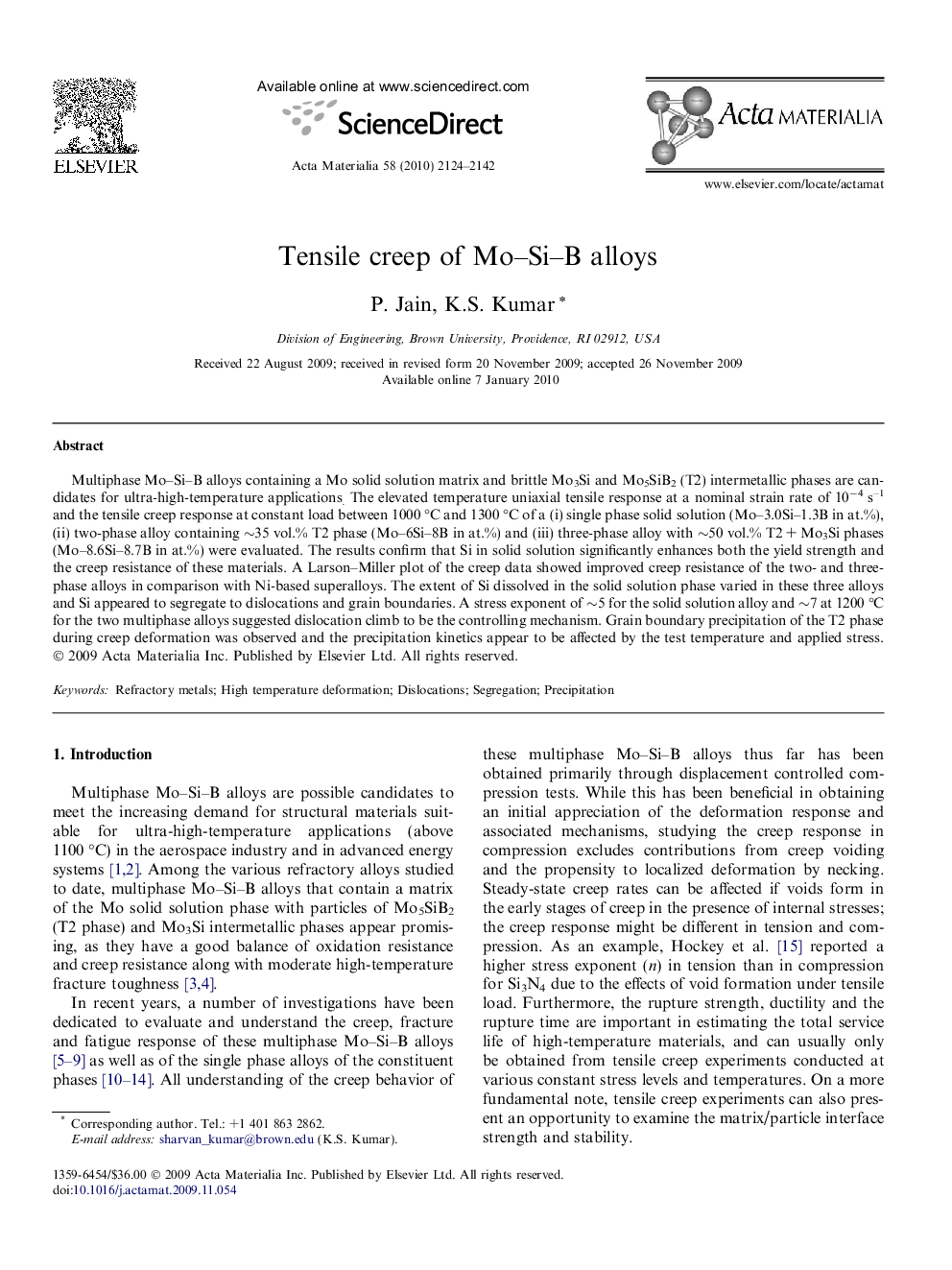| Article ID | Journal | Published Year | Pages | File Type |
|---|---|---|---|---|
| 1447724 | Acta Materialia | 2010 | 19 Pages |
Multiphase Mo–Si–B alloys containing a Mo solid solution matrix and brittle Mo3Si and Mo5SiB2 (T2) intermetallic phases are candidates for ultra-high-temperature applications. The elevated temperature uniaxial tensile response at a nominal strain rate of 10−4 s–1 and the tensile creep response at constant load between 1000 °C and 1300 °C of a (i) single phase solid solution (Mo–3.0Si–1.3B in at.%), (ii) two-phase alloy containing ∼35 vol.% T2 phase (Mo–6Si–8B in at.%) and (iii) three-phase alloy with ∼50 vol.% T2 + Mo3Si phases (Mo–8.6Si–8.7B in at.%) were evaluated. The results confirm that Si in solid solution significantly enhances both the yield strength and the creep resistance of these materials. A Larson–Miller plot of the creep data showed improved creep resistance of the two- and three-phase alloys in comparison with Ni-based superalloys. The extent of Si dissolved in the solid solution phase varied in these three alloys and Si appeared to segregate to dislocations and grain boundaries. A stress exponent of ∼5 for the solid solution alloy and ∼7 at 1200 °C for the two multiphase alloys suggested dislocation climb to be the controlling mechanism. Grain boundary precipitation of the T2 phase during creep deformation was observed and the precipitation kinetics appear to be affected by the test temperature and applied stress.
